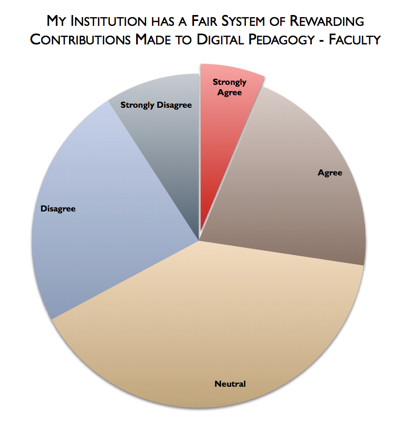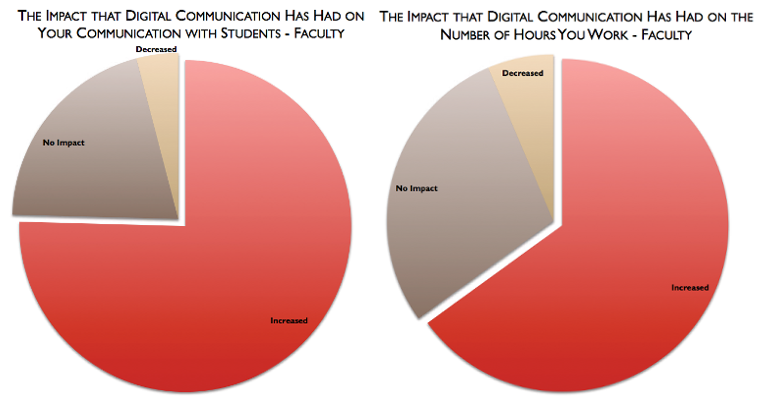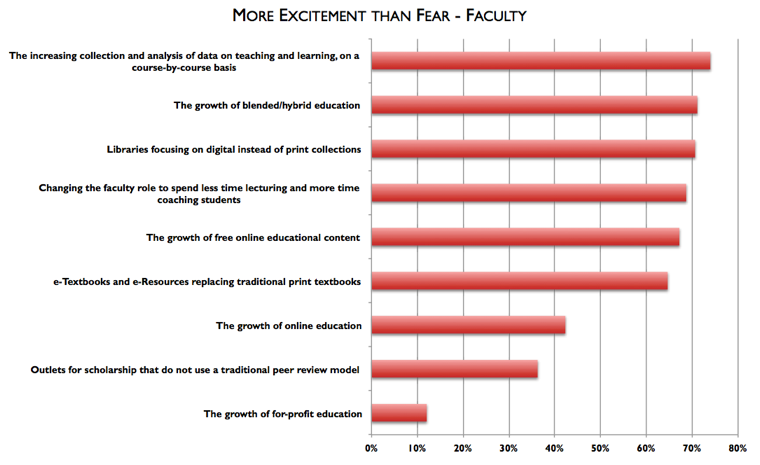How Professors Really Feel About Digital Technology [#Study]
As a follow-up to their study on how professors view online learning, Inside Higher Ed partnered with Babson Survey Research Group to explore how college professors and administrators interact with technology. The survey, summarized in Digital Faculty: Professors, Teaching and Technology, posed questions about digital learning content, e-books, social media, communication, learning management software and a variety of other technology-related issues. Here are a few key points from this excellent report.
Colleges need to reward contributions to digital pedagogy.

If colleges expect their professors to create a better digital learning experience for their students, they will need to incentivize professors:
Faculty must continually decide if the adoption of new material or new digital techniques is worth the investment of their time and effort. Will the use of a simulation improve comprehension and understanding by their students? Does a new e-textbook provide the same or better presentation of the critical class material? And if the faculty members do put considerable time and effort into the creation and production of their own materials, will the effort be respected and rewarded by their institution?
According to the survey, the answer to that last question is a resounding no. Just 6.3 percent of surveyed faculty strongly agreed that their university rewarded digital contributions. The creation of digital content and the use of digital technology in the classroom offer significant benefits to both professors and students, but technology also creates new problems. Adoption of technology will continue to be slow if colleges can’t make a strong case for change and offer incentives to professors who innovate.
Digital communication with students is prevalent but stressful.
It’s not surprising that professors fall prey to the e-mail paradox, just like everyone else: Yes, e-mail is extremely convenient, and we rely on in it for communication. But it’s also time consuming and stress inducing, especially when our smartphones are alerting us to new e-mails after-hours.
The chart on the left shows how much digital communication has increased interaction with students. An increase in communication was reported by 75.4 percent of faculty, which is great right? Yes and no. The chart on the right shows the impact e-mail has on the number of hours faculty work. A full 65 percent said the number of hours they work has increased because of digital communication. In addition, 41.4 percent of surveyed faculty also indicated that digital communication has increased stress.

Faculty Are Really Excited About the Future
Don’t worry — it’s not all bad! The team at Inside Higher Ed felt that the data was pointing to an overriding fear of technology among faculty, but the respondents indicated otherwise:
The first volume of this report series noted that faculty felt more fear than excitement about the growth of online education. Does this translate into a general level of concern among faculty for all aspects of the technology infusion that is happening in higher education?
The short answer is no – for the most part faculty express more excitement than fear about various aspects of the new technology reality.
In fact, more than 60 percent of respondents indicated they feel more excitement than fear.
The excitement-versus-fear question was asked about different technologies. The results are below.

Changes in technology are slower to occur in higher education than they are in business or consumer markets, but things are changing nonetheless. We encourage you to download the rest of the report for more information.








